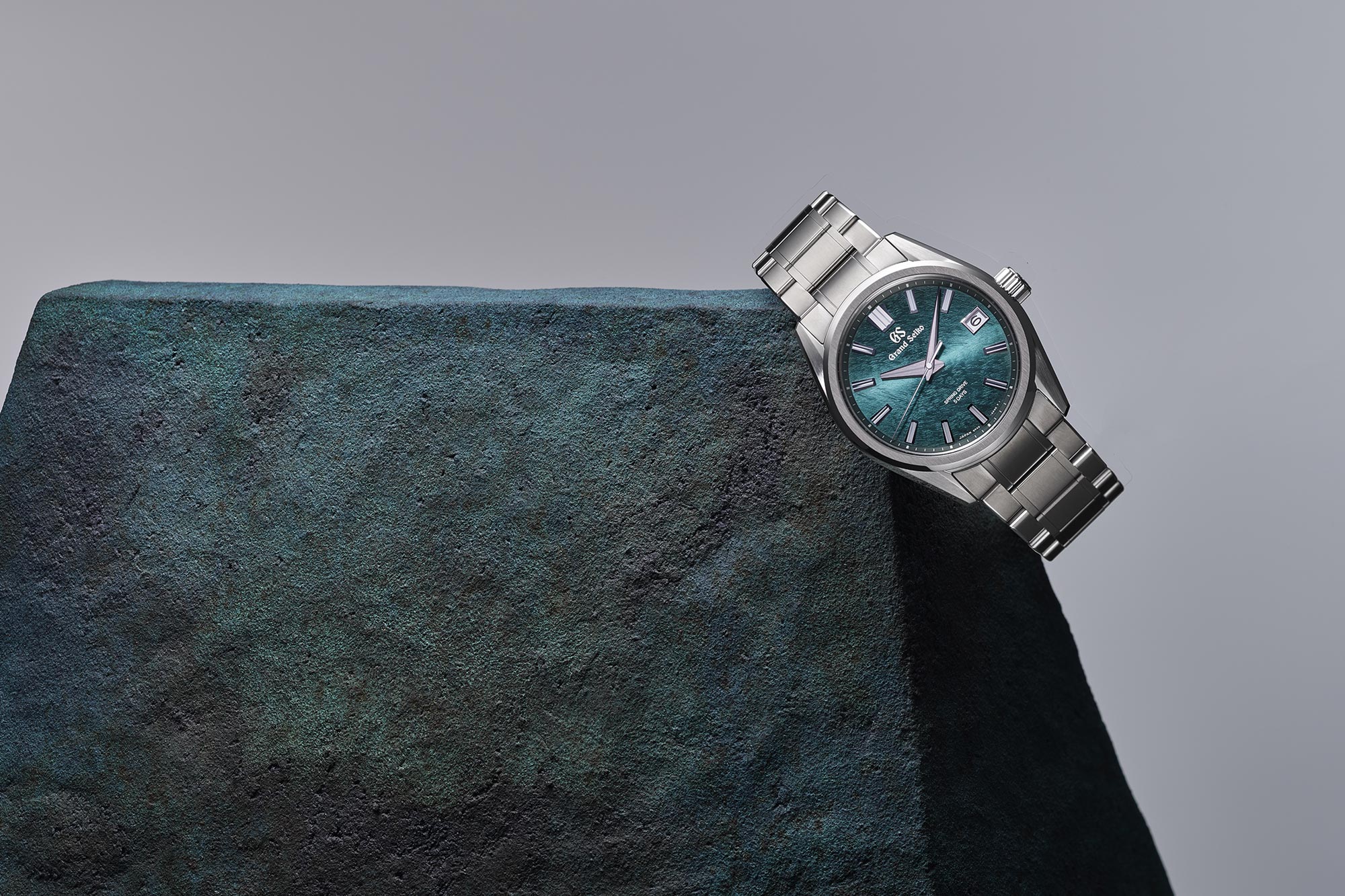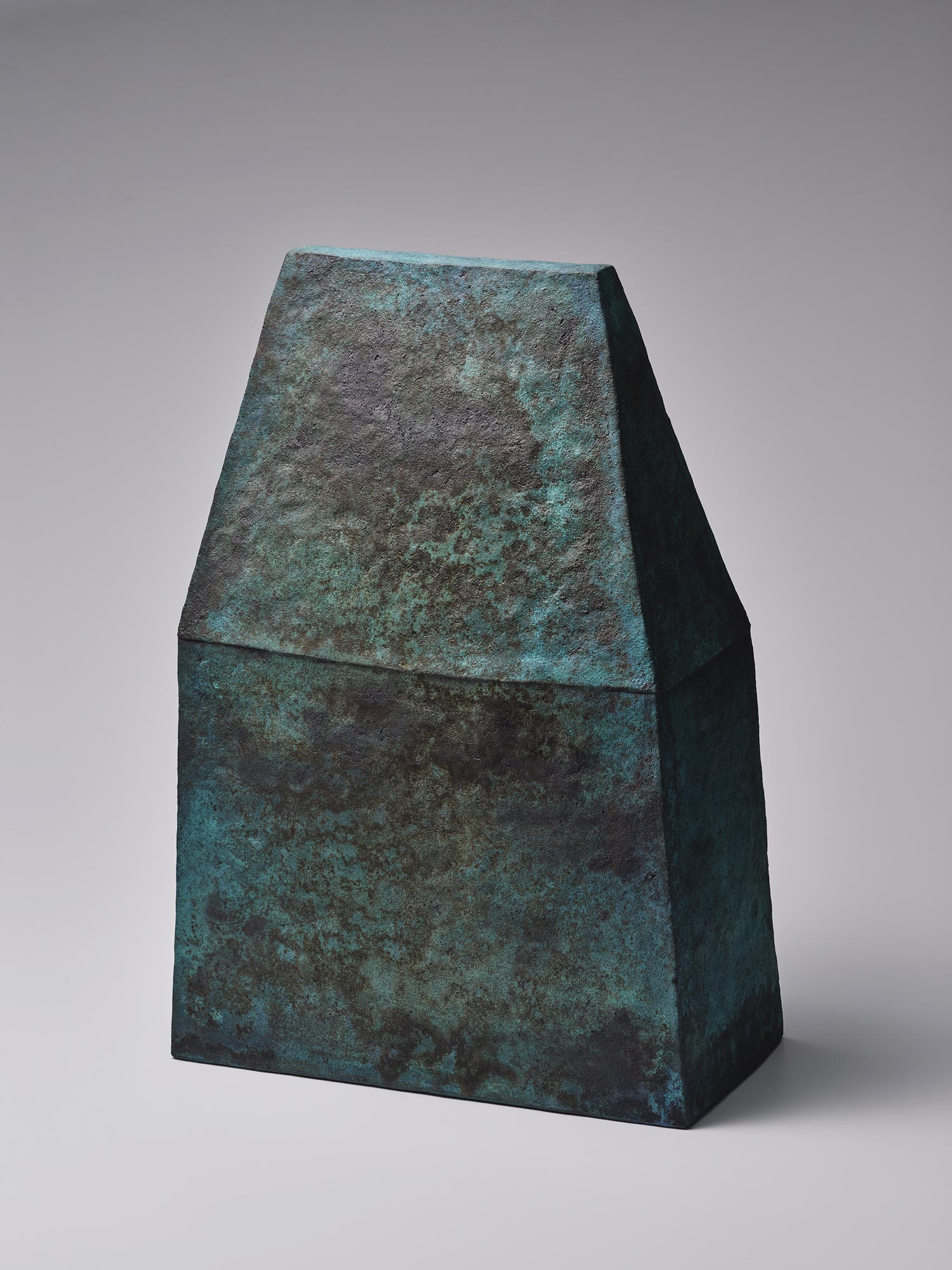
The green patina that forms on copper or brass when exposed to rain and wind for a long time is called “verdigris.” The Great Buddha of Kamakura is an example of this. In the past, this type of patina was not particularly favored in Japan, but unlike red rust, it does not corrode the metal and instead has a protective effect on the interior. In modern times, it has come to be appreciated as a manifestation of sabi (the Japanese aesthetic of rusticity and simplicity). Koichi Uchida’s verdigris-colored works reflect this rustic expression on ceramics by spraying copper powder. The world of ceramics has always been closely related to metals, using gold, silver, and manganese glazes to add various hues to pottery by utilizing metals effectively. This artwork is an extension of that history. The blue-green color was created through new methods while respecting history. It has a mysterious appearance, as if multiple layers of color have been applied, and embodies a spirit and beauty akin to the emerald-green dial of the newly introduced Grand Seiko SLGA025.

Nagano Prefecture, where Spring Drive movements are manufactured, has innumerable rivers that flow down several mountains rising over 3,000 meters, creating a lush natural environment. The Atera Valley, located in Nagano, is one of the foremost places of scenic beauty in Japan. The clear waters of the Atera River are referred to as “Atera blue” and enchant the hearts of all who visit. This model adopts an emerald-green dial that is reminiscent of “Atera blue” (in Japanese culture, blue traditionally included green, and this influence remains today). The dial conjures the image of a stream so clear that one can see the bottom, as well as the rich, natural harmony of summertime, by using the vibrant color and delicate dial pattern. At the heart of this watch is the Spring Drive 5 Days Caliber 9RA2, which provides up to 120 hours of power reserve and achieves an average accuracy of ±10 seconds per month.
Photography = Naohiro Tsukada
Text = Natsuki Ando